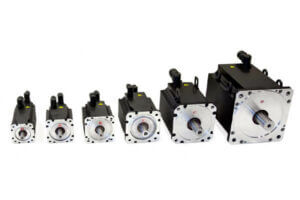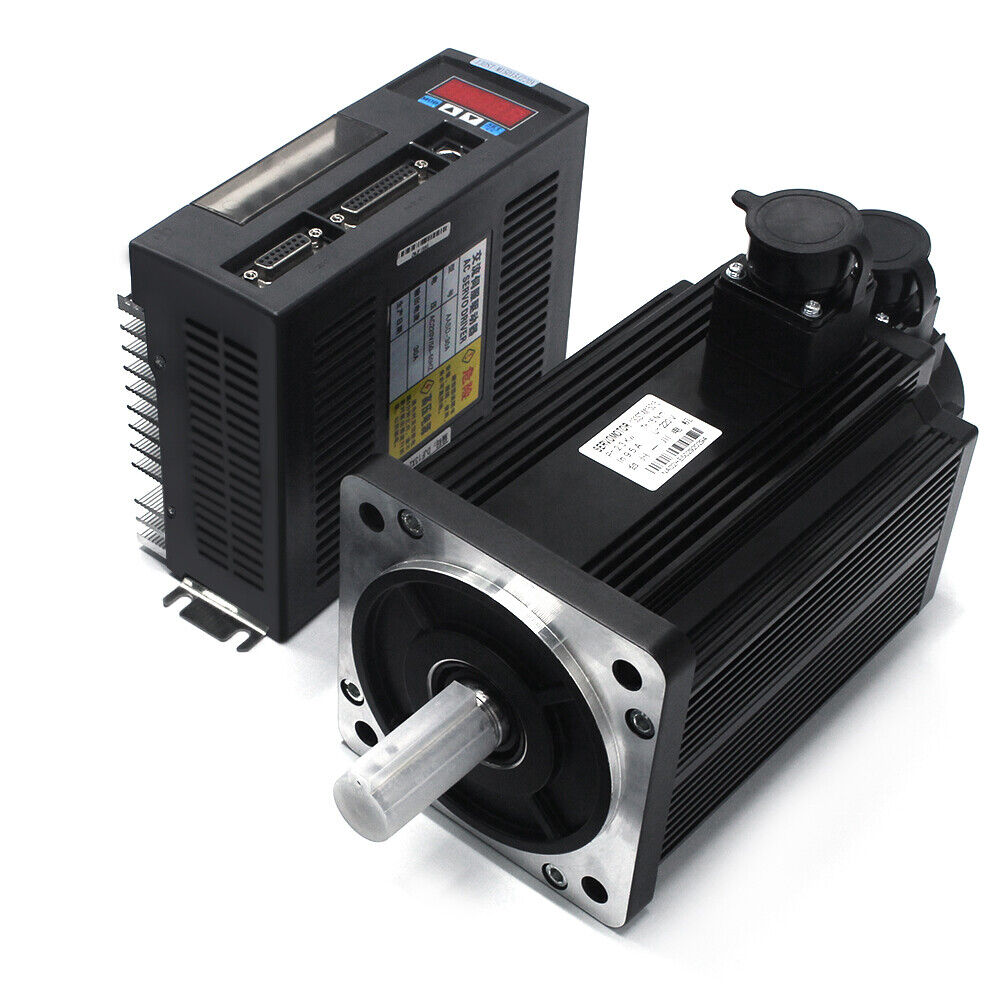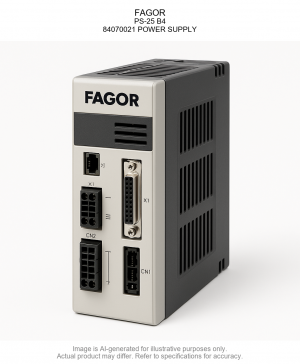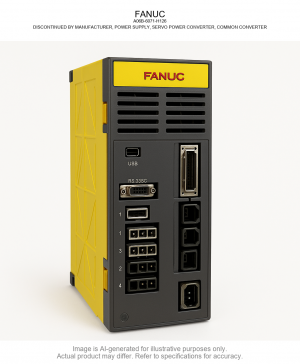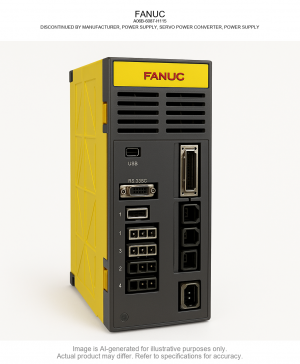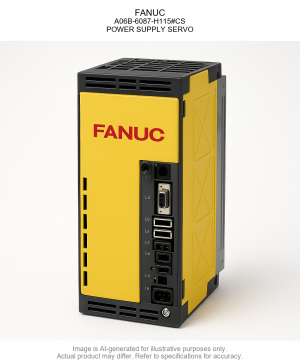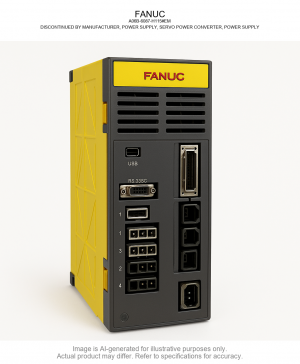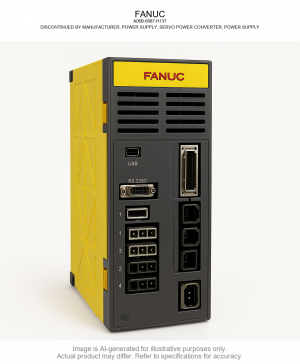A CNC converter enables communication between analog and digital systems, ensuring that legacy machine tools remain compatible with modern digital control systems. Whether it’s converting…
A CNC converter enables communication between analog and digital systems, ensuring that legacy machine tools remain compatible with modern digital control systems. Whether it’s converting analog voltage to digital data or regulating output signals to servo amplifiers, these devices are vital in bridging generations of equipment in industrial automation.
At Venus Automation, we provide reliable CNC converters, analog-to-digital converters, frequency converters, and signal interface boards. Designed for compatibility, they connect legacy drives, sensors, and controllers to modern automation networks — extending system life and ensuring optimal productivity.
What Is a CNC Converter?
A CNC converter (or CNC interface module) is an electronic circuit or board that translates analog signals into digital signals, and vice versa. These conversions ensure precise data exchange between sensors, controllers, and actuators.
For example, an Analog to Digital Converter (ADC) reads voltage from a Load Cell or temperature sensor, converting it into binary values the CNC controller can process. Conversely, a Digital to Analog Converter (DAC) produces a smooth voltage output to drive servo amplifiers, frequency converters, or motor control circuits.
CNC converters support both Analog Digital Converter and Digital to Analog Converter functions, ensuring bidirectional communication for full control feedback loops. When paired with servo drives and controls, these converters synchronize analog sensor feedback with digital motion data — maintaining precision and repeatability across operations.
How CNC Converters Work
CNC converters process electrical and digital data through multiple stages:
1. Analog to Digital Conversion (ADC)
The converter measures analog voltage from sensors or transducers (e.g., pressure, torque, temperature) and converts it into a 16-bit variable digital code. This ADC result ensures the industrial controller interprets analog behavior as exact numeric values. The bit resolution determines how finely voltage changes are captured — a critical factor for high-accuracy factory automation and robot applications.
2. Digital to Analog Conversion (DAC)
In the opposite direction, a DAC output generates a continuous voltage signal used by actuators, spindles, and drives. Systems requiring fine torque or speed control often rely on 14-bit analog outputs, ensuring minimal distortion and smooth motion control in machine tools and transfer lines.
3. Signal Conditioning
Integrated signal conditioner circuits filter noise, stabilize current, and isolate ground loops to protect sensitive hardware. These filters ensure signal clarity across both analog devices and digital square-wave signals, vital for achieving reliable data in noisy industrial environments.
4. Communication & Protocol Interfaces
Modern CNC converters include USB interfaces, SPI communication interfaces, and I2C modules for flexible integration. These allow communication with microcontrollers, Raspberry Pi, or Remote I/O devices. Properly sized pull-up resistors stabilize data lines and reduce jitter during high-speed communication.
5. Voltage & Power Management
Stable power delivery is critical. Each converter must receive regulated input from a compatible power supply. Over-voltage can cause errors in digital control systems, while insufficient supply voltage can distort analog output levels or degrade voltage currency accuracy.
Industrial Applications
CNC converters play an essential role in the integration of analog and digital control systems throughout automation. Their applications include:
- Legacy Equipment Retrofits – Upgrading discontinued products without replacing entire systems.
- Measurement Systems – Converting analog signals from strain gauges and Load Cells into calibrated digital data for monitoring.
- Motion Control – Managing analog torque and frequency converters for precision speed and position regulation.
- Factory Automation – Facilitating communication between industrial controllers, PLCs, and servo amplifiers.
- Testing Environments – Using converters with Digital Displays to validate voltage accuracy, torque performance, and ADC types.
- Remote Diagnostics – Integrating into robot applications and telemetry systems for continuous monitoring.
Each converter ensures consistent communication across diverse signal types — from analog to digital and digital to analog — forming the foundation for modern industrial automation systems.
Design & Integration Tips
When integrating CNC converters into your control network, keep these best practices in mind:
- Voltage Compatibility: Match power-up output voltage to system requirements and confirm isolation between analog and digital grounds.
- Resolution: Choose converters with at least 14- or 16-bit resolution for precise analog input processing.
- Isolation: Optical isolation prevents cross-interference from other high-power equipment or idle industrial equipment nearby.
- Thermal Management: Avoid heat buildup by using cross-flow cooling fans or heat sinks in enclosed cabinets.
- Communication Time: Minimize latency between sensors and controllers — critical for high-speed motion loops.
- Temperature Drift: Select converters rated for industrial temperature ranges to ensure accuracy in varying environments.
For best performance, ensure the converter’s part number, firmware version, and bit resolution match your existing CNC or Programmable Logic Controller (PLC) specifications. During the selection process, review datasheets for voltage output, input ranges, and Power Board Assembly compatibility.
Compatibility & System Expansion
CNC converters connect effortlessly with:
- Servo Motors – ensuring closed-loop feedback accuracy.
- Servo Add-On Modules and Boards – expanding I/O and signal control.
- Analog sensors such as pressure transducers and displacement probes.
- Digital encoders (e.g., Quad A/B/Z, absolute multiturn position sensors).
- Remote I/O and modular interfaces that link multiple control systems.
These configurations allow for full integration of analog sensors, digital encoders, and feedback systems — supporting both Analog to Digital Converters and Digital to Analog Converters within one platform.
Maintenance & Troubleshooting
CNC converters are durable, but periodic checks ensure continued reliability:
- Verify analog voltage accuracy with a calibrated multimeter.
- Confirm DAC outputs produce stable voltage levels under load.
- Inspect header pins, terminals, and wiring for corrosion or loose fittings.
- Monitor ADC results for drift or unstable readings.
- Update firmware to correct communication time errors or unreleased features.
For aging or discontinued products, Venus Automation offers retrofit kits compatible with major OEMs such as Yaskawa Controllers, King Core modules, and legacy CNC converter boards.
Support, Warranty & Delivery
Venus Automation provides expert customer service, fast Shipping Options, and a straightforward Return Policy across Australia.
We also supply verified industrial parts for power management, motion control, and signal processing — ensuring consistent factory automation performance across every installation. For complex retrofits or urgent replacements, our team offers full application support and same-week delivery to reduce downtime.
Final Note
From analog voltage sensors to digital control systems, CNC converters form the heart of hybrid automation. They ensure seamless conversion between voltage domains, maintain communication across control loops, and extend the life of legacy machine tools.
Trust Venus Automation — Australia’s leader in automation, signal conversion, and control system retrofits — to deliver precision-engineered CNC converters that connect every generation of industrial technology.


